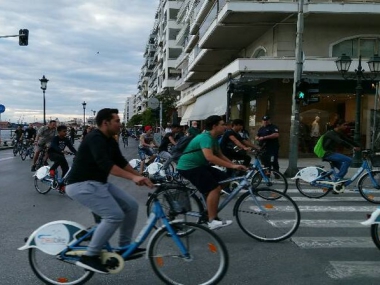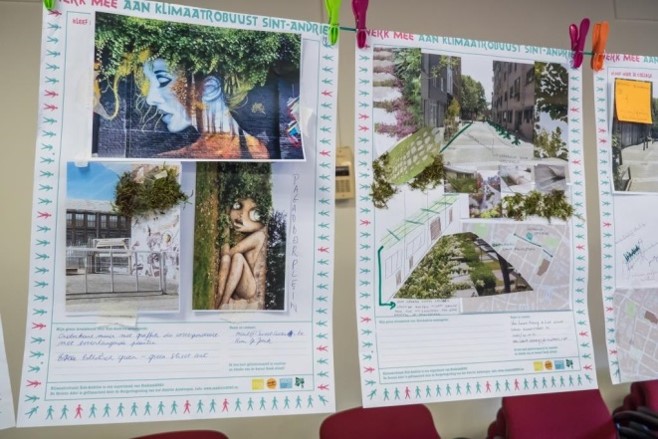5 ways how to get people of your local community involved in your Urbact project
Edited on
07 November 2017While at a partner meeting in Antwerp, partner cities of the Resilient Europe project discovered they have quite some challenges in common. One of those challenges is the interaction and involvement of the local communicty of the district we like to call Urban Living Lab. Here are some experiences cities would like to share:

1. Cycling together
“In Thessaloniki, we organised a bicycle tour to raise awareness of the benefits of using a bike in the city. People had the possibility to experience using a bike at the spot. Of course, it was also important to give them more information, like facts and figures to increase their involvement and their understanding. There was a lot of interaction, which was fun for us and fun for them!” Anthi Tsakiropoulou (Thessaloniki, Greece)
2. Teach children
“In Burgas, we are trying to put the focus on education of resilience by teaching children about the concept. Through these children we approach their parents and ask them to volunteer together.” Georgi Sakaliev (Burgas, Bulgary)
3. Collaborate with association of retired citizens
“We create involvement by making tight connections with the local community. We teamed up with a local association, that knows the people in the neighboorhood very well and has their trust. In this specific case, we use the potential of association of retired citizens. This organisation helped us establishing a close connection through door-to-door conversations. Thanks to the participation of this association the people were open for a conversation to exchange opinions and ideas. The association was already aware of the challenges and were already effected by for example flooding. Citizens often think that the government doesn’t want to change anything and they have a solid distrust towards the local government. Samll steps and very local appraoch and with visible results.” Georgi Sakaliev (Burgas, Bulgary)

4. Interactive online platform
“We realized interaction is everything. We created an online platform on which citizens could post their ideas about resilience for future projects. It’s open and transparent, see: http://www.diavouleusi.eu/#services. Understanding that not everyone is able to upload ideas themsleves for whatever reason, we help citizens by providing them with our assitance. They can call our office for an appointment and we will sit down together. This way they are involved in the provcess, from the beginning until the excution.” Georgios Antoniou (Ioannina, Greece)
5. Dream together
“We organized a ‘dreamday’ in which people from the neighboorhood were invited to express their dreams for the district. Also, we invited entrepreneurs and achitects to make sure the group was varied. What if anything is possible? People got enthousiastic and the got the chance to dig in immediately as we made sure there were gardening tools.” (Reinhilde Schmit (Antwerp, Belgium)

Submitted by rkoskamp on
